“After Friedrich Nietzsche declared that ‘God is Dead’, the word FUCK has become the most important word in the English language”, says Osho aka Bhagwan in a speech to his followers. He elucidates his point quite hilariously. However, such transgression do not occur in Hipcescu.

Nadia Plesner (1982), a Danish artist who works and lives in Amsterdam, is currently being sued by luxury giant Louis Vuitton for depicting a so-called “Audra” bag on her epic work Darfurnica. Since January 28 of this year, Plesner has incurred a fine of €5000 a day – now totaling over €440,000 – for refusing to remove the work from her website, and for refusing to stop exhibiting the work in any other form. But by suing Plesner, Louis Vuitton is unduly interfering with the freedom of expression of all artists.
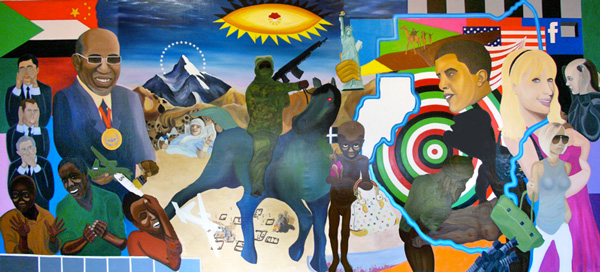
€440,000 – good for only one or two Paris Hilton shopping sprees, but an awful lot of money for a 29-year-old art student. According to Plesner, “Darfurnica is a modern version of Picasso’s Guernica,” the Spanish artist’s famous outcry (1937) against the atrocities of the Spanish Civil War. “What horror,” they must have thought at the Versailles Palace of Louis Vuitton’s legal department. “We don’t want our wonderfully exclusive upscale bags linked to such monstrosities!”
But for Plesner, Darfurnica is not about besmirching Vuitton’s carefully crafted reputation; rather, it is an exploration of the fading boundaries between journalism and advertising, between editorial and commercial content. How come, she asks, trifles about celebs have become breaking news, while a genocide happening somewhere in the world – in Darfur for instance – is not “important” enough to make headlines? “This is unacceptable and I refuse to turn the blind eye to what is happening,” Plesner says on her website.
The question is, why is Louis Vuitton so incredibly finicky about the image of one of its bags appearing in the work of a hitherto unknown artist? Does the company’s legal department believe that the Audra bag’s cameo in Darfurnica will actually damage its sales, reputation, or brand equity?
By suing, the company has opened up a can of worms, launching Plesner – a tiny dauntless David up against a powerful corporate Goliath – into the limelight as a martyr and symbol of artistic freedom and freedom of expression.
In terms of reputation management, the lawsuit is foolish and counterproductive. All the more so considering that Louis Vuitton is not the only brand depicted on Darfurnica – Chanel, Hèrmes, Paramount, Facebook, Victoria Beckham, and the omnipresent Paris Hilton are also featured. Did they sue? Nope.
Without a doubt, Louis Vuitton’s biggest tactical mistake is its failure to recognize that it is not just a brand, but also a cultural icon. In this capacity, Louis Vuitton is not merely the exclusive intellectual property of Louis Vuitton, but also an object in and of the public imagination, and a part of the cultural heritage of our time. Although it is privately owned, its iconic status has transformed it into some sort of public property, and made it an object of artistic sampling – just like Andy Warhol and his Campbell’s soup cans.
Most brands would be happy to reach iconic status, but not Louis Vuitton. The haughty brand, whose ad campaigns boast politically engaged celebrities like Bono and former Soviet leader Michael Gorbachev, has gotten itself into in a street brawl with an art student, whom it is now attempting to squash financially as well as artistically.
But the effort to erase Darfurnica from the public eye only adds insult to injury, as it is an attempt to curb all artists’ freedom of imagination and expression – not exactly the core-business of a luxury brand.
Unlike its counterparts Hèrmes and Chanel, Louis Vuitton overlooked one crucial thing: noblesse oblige.
This picture of the Cruas Nuclear Power Station in France is very evocative. While pure white fumes go up in to the atmosphere, art and nuclear energy happen to combine wonderfully. In Hipcescu, this is something we have always known.
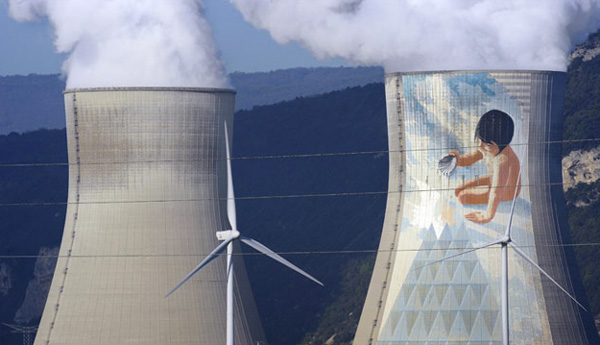
posted by
V. Hipcescu on 26.03.2011, under
Advertising,
Architecture,
Art,
Business,
Creativity,
Hippopotamus,
Ideas,
Marketing,
Politics,
Urban planning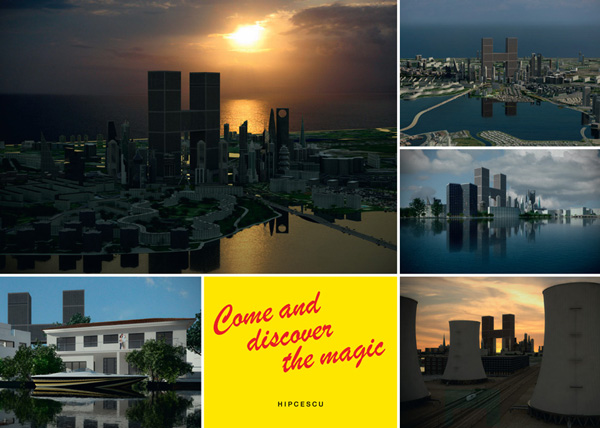
On the sunny shores of the Caspian, only a four hour flight away from Western Europe, the City of a Thousand Suns awaits you. Hipcescu, a thriving 21st century metropolis, home to the world’s highest building, the iconic Hipcescu Tower (850 m). Visible from every angle of the city, it is a monumental tribute to our Secretary General, V. Hipcescu. And while a highly efficient state-security apparatus ensures your safety at all times, you will thoroughly enjoy our eco-friendly beaches, exciting nightlife, tax-free shopping, reliable nuclear energy sources and excellent real estate investment opportunities. Hipcescu. Come and discover the magic.
Having worked with him on a project for Guess Watches, I knew that Daniel Nogueira was a versatile director. But his latest project, Follow Me, a music video for a singer called Krause (whom I’d never heard of), really surprised me. Daniel actually created Follow Me out of pointcloud-data – the video’s launching website explains what pointcloud-data actually means, in case you’re interested in how this high-tech pièce de résistance came about. I’m pretty sure that Follow Me cost him a lot more blood, sweat and tears than he’d expected when embarking on the project. Daniel man, big up from Hipcescu!
Exposure is an installation by the British sculptor Antony Gormley. In Lelystad, The Netherlands, where it stands, locals have irreverently dubbed it the shitting man. Exposure weighs 60 tonnes, contains 5,400 bolts and consists of 2,000 components.
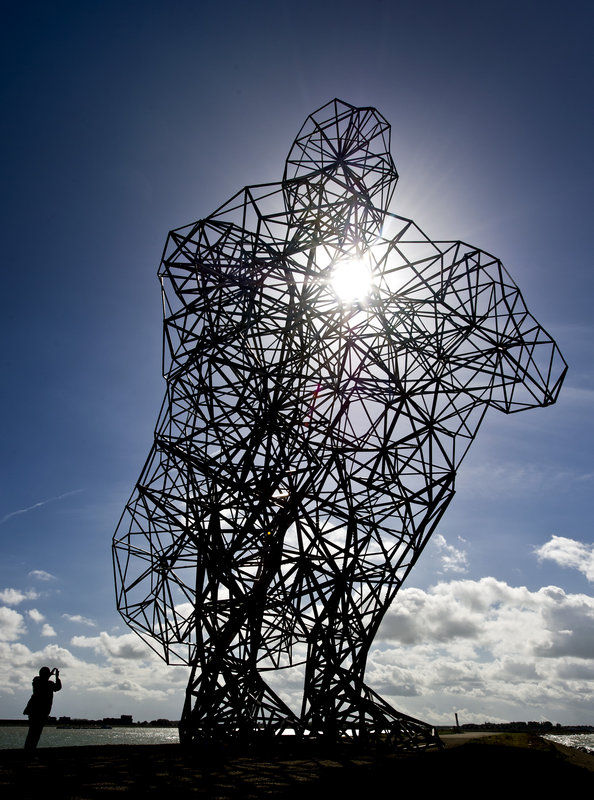
Look at it from a distance and you see a crouching man. Take a closer look and the man dissolves into abstract metal nodes that constitute a complex geometry.
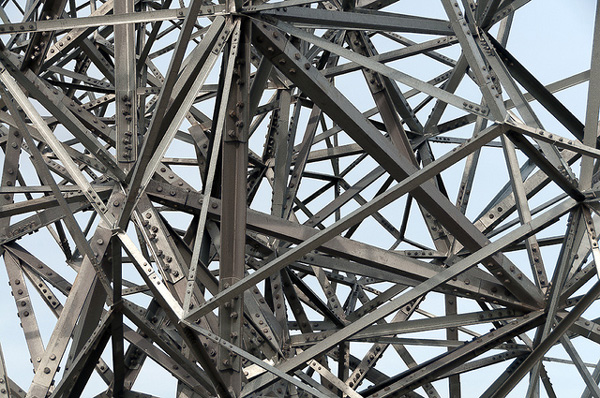
photo: Ed Jansen
It is at the dissolution point that the figurative fades into pure abstraction. This man is clearly a hybrid.
On Kawara is a Japanese conceptual artist. On each day, between 1968 and 1979, he would send two different friends or colleagues a picture postcard, stamped with the exact time he arose that day and the addresses of both sender and recipient. This work was called I GOT UP.
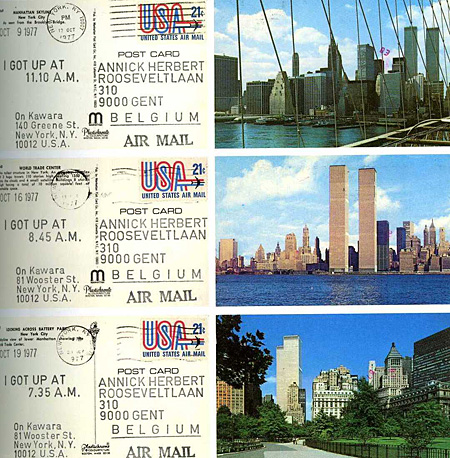
The message on the postcard was always the same: “I GOT UP.” The only variables in this otherwise monomaniacal work were the postcard and the specific time and place of On Kawara’s waking. In a sense, he started Tweeting two decades before the advent of internet – each ‘Tweet’ containing the fundamental message that every Tweet contains: I communicate that I exist. In On Kawara’s case: I communicate that I exist in a given time and place.
By the way, check out On Kawara’s Twitter account.







